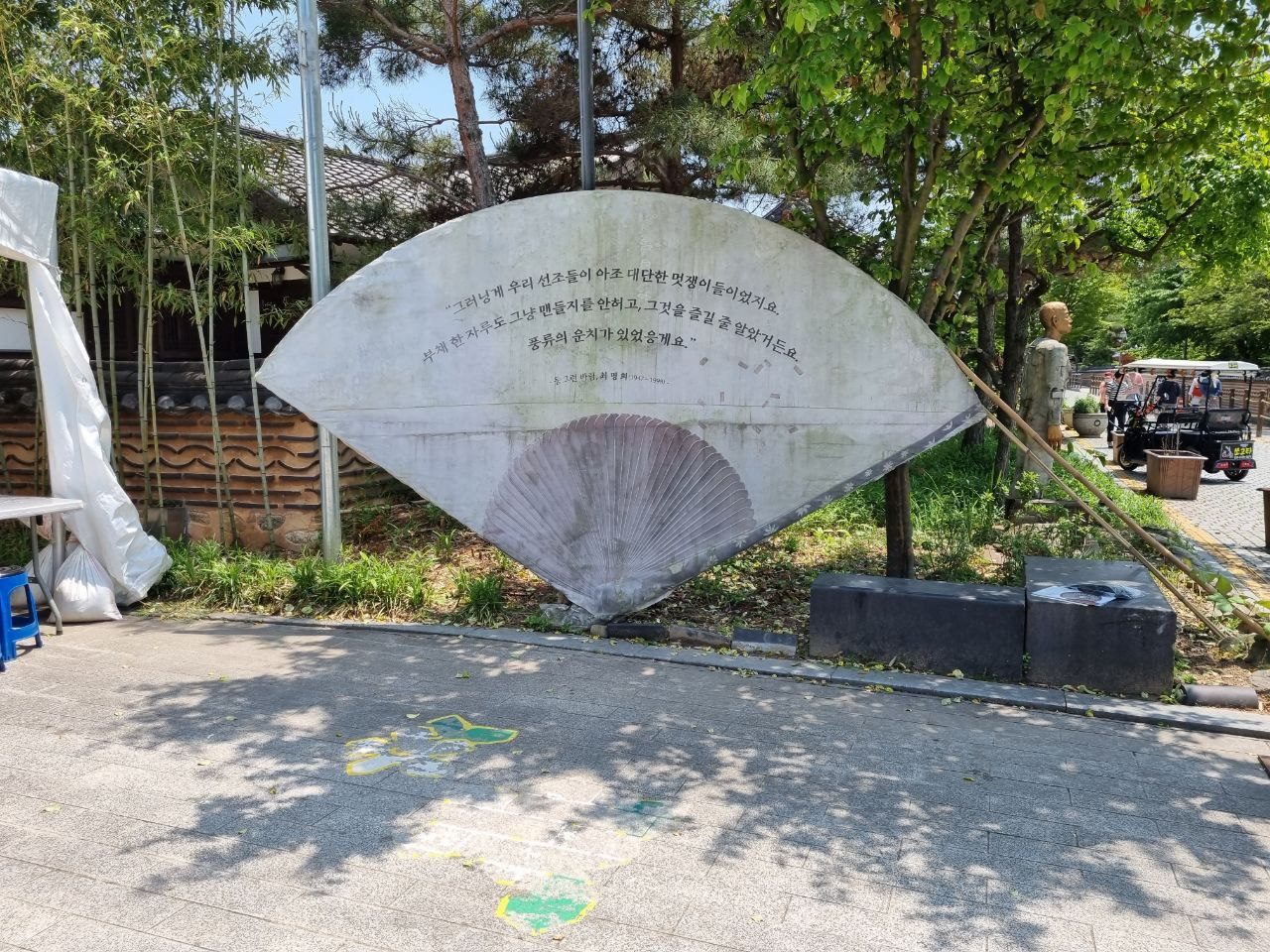
Do you remember our digital trip to Jeonju traditional village?! Today I want to take you there again and show you another unique place. It is a Fan Cultural Center.

Intro
Fans are a part of Korean culture and traditions. People use them for ages. Fans were a part of daily life, a part of the culture, a part of history. People used fans to protect themselves from the hot summer. Also, fans were a part of the performance. Many people had and have fans at home as interior decoration. And of course, fans are a part of fashion.
Fan Cultural Center
The cultural centre is located inside the Jeonju Hanok Village, so the building design reminds hanok. Actually, that atmosphere helps to feel the culture deeper.
The fan cultural center is not so large, but here you can find a small exhibition corner, you can try to make a fan by yourself, and you can learn more about fan history and culture.
Fans types
Fans have different shapes and designs. The design tells which region the fan is from.
Generally, all fans can be divided into 2 sorts: Danseon (a round fan) with a handle and Jeobseon (a folding fan) which can be folded and unfolded.

The ribs of Danseon spread radially from the centre of the handle, which is like sunbeams waking up all of the creations early in the morning. The elegance of Danseon lies in its shape, bending the fan ribs to increase its sophistication, as well as in its patterns. We can catch a glimpse of the aesthetic sense of ancestors who could create a dignified charm with the fan ribs hidden in the lines and planes.

The ribs of Danseon spread radially from the center of the handle, which is like sunbeams waking up all of the creations early in the morning. The elegance of Danseon lies in its shape, bending the fan ribs to increase its sophistication, as well as in its patterns. We can catch a glimpse of the aesthetic sense of ancestors who could create a dignified charm with the fan ribs hidden in the lines and planes.

Entry fee
There is no entry fee in the Fan Cultural Center. So everyone is free to visit it and fall into the world of fans.
Also, you can try to make the fan by yourself. Or you can just try to decorate it, and draw what you want.

Comments
Post a Comment